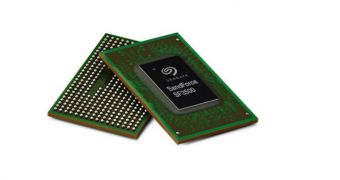The SandForce 3000 series has been long promised by Seagate in order to replace the older SF2000 series that have been mired with problems since their inception. BSOD, freezes and even an AES encryption scandal has put Seagate in a precarious position for years until announcing in November 2013 that the company moves on to the next chapter of SSD controller development, the SandForce 3000.
Although back in 2013, Seagate announced the SF3700, which still remains a chimera, this year at Computex the company announced the more tactile SF3500 (it has been on display), considered to be the SF3700's little brother designed for enterprise market.
The reason for the two to be called differently doesn't only lie in marketing, as the SF3500 and SF3700 are separate dies with the SF3500 having four NAND channels whereas the SF3700 keeps the 9-channel design as announced previously. Built on the BGA - 152 NAND flash and sporting a Toshiba 15nm flash memory, the SF3500 will try to remain as cost-effective as possible, also by keeping the 4 NAND channels, and Seagate still aims to provide a strong competition to Silicon Motion.
Affordable by innovation
The new SF3500 series 4-channel die will support all classical SandForce technologies like DuraWrite, SHIELD, RAISE, but this time the SF3500 will use external DRAM for the NAND mapping table, while the SF3700 will stay true to the older SandForce controllers of using the integrated SRAM memory. Apparently, Seagate aims to reduce power and increase performance and to help system waking up faster from sleep by tapping into the larger DRAM amount available.
The SF3500 unfortunately will use only RAISE 1 mode which uses one NAND die for protection against single page/block failures and not mode 1 and 2 RAISE support like the SF3700, mode 2 being able to protect against a full die failure, apparently the 9th is made just for such safety reasons.
The new SF 3000 series seems designed to resist in far better conditions than current controllers under mixed read/write workloads, and while the PCIe SSD market is fairly new and fresh, Seagate wants to quickly tap into this new market by pushing its new SF3000 generation of controllers into the very top manufacturers of PCIe SSDs.

 14 DAY TRIAL //
14 DAY TRIAL //